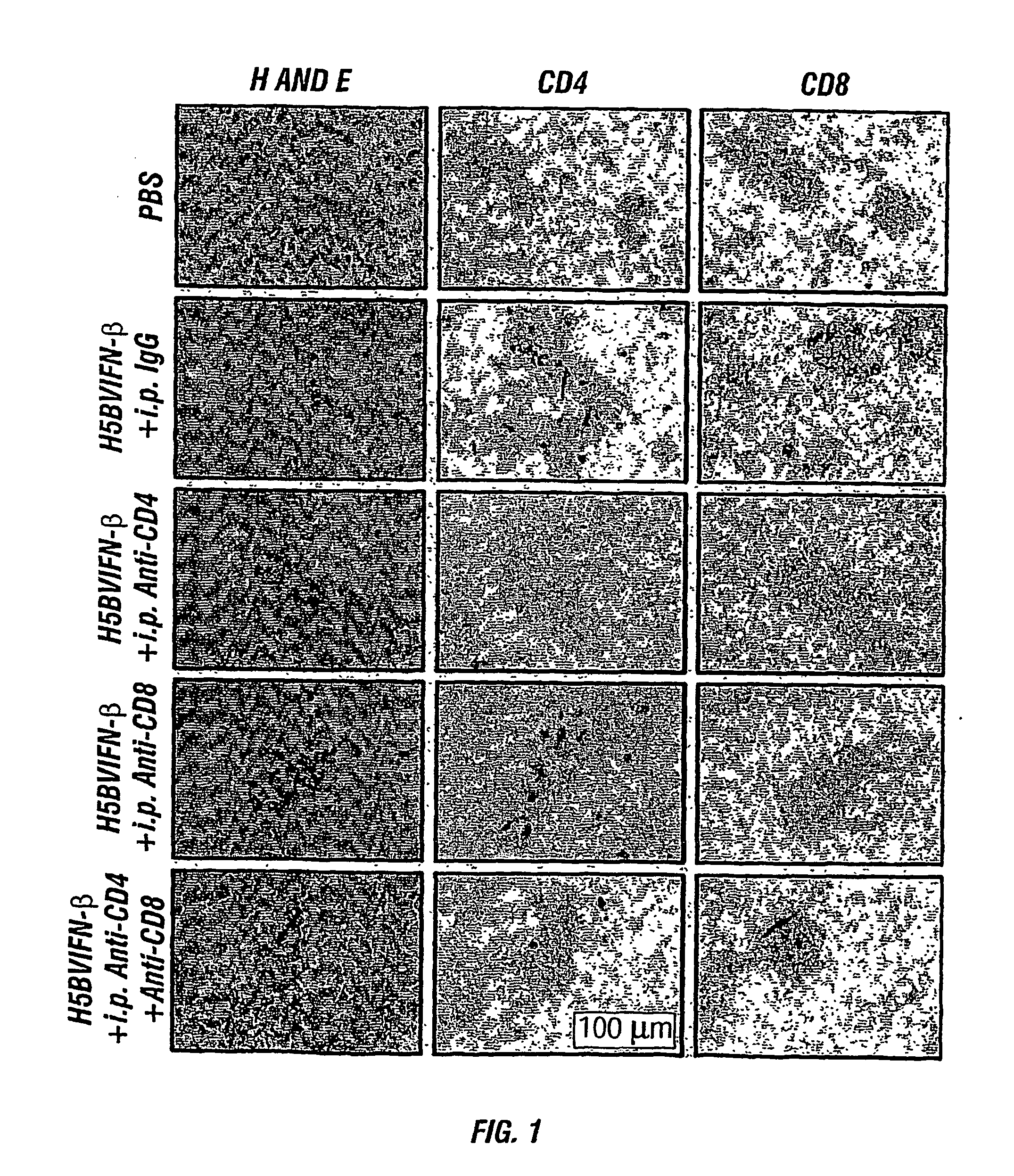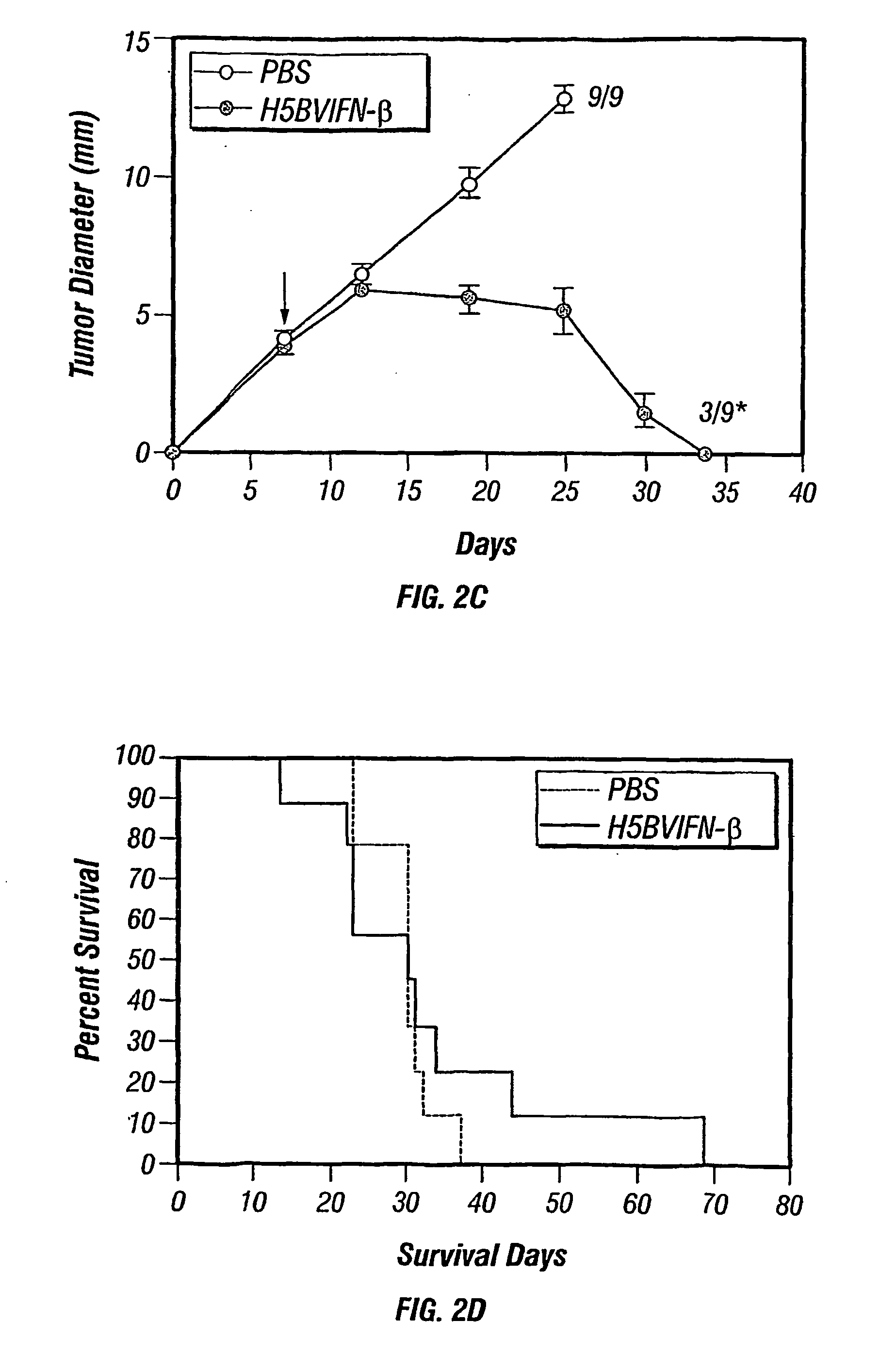Active specific immunotherapy of cancer metastasis
a cancer metastasis and immunotherapy technology, applied in the field of immunotherapy and cancer biology, can solve the problems that the ability of this type of therapy to reach metastatic tumors in the brain has not been assessed, and achieve the effect of preventing the development of occult brain metastasis
- Summary
- Abstract
- Description
- Claims
- Application Information
AI Technical Summary
Benefits of technology
Problems solved by technology
Method used
Image
Examples
example 1
Materials and Methods
[0160] Mice. Specific pathogen-free female C3H / HeN mice were purchased from the Animal Production Area of the National Cancer Institute-Frederick Cancer Research Facility (Frederick, Md.). The animals were maintained in facilities approved by the American Association for Accreditation of Laboratory Animal Care and in accordance with current regulations and standards of the United States Department of Agriculture, Department of Health and Human Services, and National Institutes of Health. The mice were used in accordance with institutional guidelines when they were 6 to 8 weeks of age, except where otherwise indicated.
[0161] Baculovirus, Insect Cells, and Culture Conditions. Grace's medium, wild-type baculovirus, pBlueBacHis2A baculovirus transfer vector, liposome-mediated transfection kit, and Sf9 and High Five (H5) insect cells were purchased from Invitrogen Corporation (Carlsbad, Calif.). Fetal bovine serum (FBS) was purchased from M. A. Bioproducts (Walkers...
example 2
Results (Brain Metastasis)
[0170] Eradication of s.c. Tumors by H5BVIFN-β Confers Tumor-specific Immune Protection against Brain Metastasis. C3H / HeN mice were implanted s.c. with either UV-2237M or K-1735M2 cells, and on day 7, the resulting tumors were injected with H5BVIFN-β. Six weeks after the complete regression of the UV-2237M fibrosarcoma or K-1735M2 melanoma (which was 9-10 weeks after injection), the mice were randomized to receive an intracarotid injection of either UV-2237M or K-1735M2 cells. In naive (control) mice, brain metastases developed in 9 / 10 and 9 / 9 mice, with a median survival of 27 and 23 days, respectively (Table 1). Mice cured of s.c. UV-2273M tumors by intralesional injection of H5BVIFN-β did not develop UV-2237M brain metastases but did develop K-1735M2 brain metastases. The median survival of these two groups of mice was >180 days and 18 days, respectively (P180 days and 30 days, respectively (p<0.001).
[0171] The mere growth of tumors in the subcutis did...
example 3
Results (Lung Metastasis)
[0175] Methods: The effects of subcutaneous injection of a mixture of H5BVIFN-β and irradiated UV-2237m tumor preparation on growth of existing lung metastases in mice with surgically removed s.c. tumors were examined. UV-2237m cells (2×105 / mouse) were s.c. injected into 20 C3HVHeN mice. On day 18 after tumor cell inoculation, the tumor-bearing mice were i.v. injected with 5×104 / mouse of UV-2237m cells. Five naïve mice were i.v. injected with UV-2237m cells as a control. One day later, the subcutaneous tumors were surgically resected, enzymatically dissociated, and irradiated (2,000 rads from the Cesium-137 source). On day 21, mice in which s.c. tumor were surgically removed were randomized into 4 groups and s.c. injected with PBS, 2×106 lyophilized H5BVIFN-β, 5×106 irradiated cells from UV-2237m tumors, or a mixture of H5BVIFN-β and 5×106 irradiated cells. The treatment was repeated on day 28 and 35 after the subcutaneous tumor cell inoculation. The mice w...
PUM
| Property | Measurement | Unit |
|---|---|---|
| Size | aaaaa | aaaaa |
| Time | aaaaa | aaaaa |
| Time | aaaaa | aaaaa |
Abstract
Description
Claims
Application Information
 Login to View More
Login to View More - R&D
- Intellectual Property
- Life Sciences
- Materials
- Tech Scout
- Unparalleled Data Quality
- Higher Quality Content
- 60% Fewer Hallucinations
Browse by: Latest US Patents, China's latest patents, Technical Efficacy Thesaurus, Application Domain, Technology Topic, Popular Technical Reports.
© 2025 PatSnap. All rights reserved.Legal|Privacy policy|Modern Slavery Act Transparency Statement|Sitemap|About US| Contact US: help@patsnap.com



